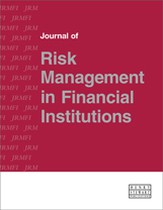The computation of optimised credit transition matrices
Abstract
Transition probability matrices (TPMs) indicate the likelihood of obligor credit migration over a specific time horizon. TPMs are used in various risk management applications ranging from loan evaluation, portfolio risk analysis, economic capital assessment and the pricing of financial instruments. The standard methodology is to compute single period TPMs from empirical data using the discrete cohort approach and estimate t period TPMs as the t year product of single period empirical TPMs (exponentiation). This methodology assumes credit migration is Markovian and time homogeneous. When these assumptions do not hold, this methodology results in significant forecasting errors for multi-period transition horizons. In this paper, a framework for generating empirically consistent TPMs using an optimisation methodology is presented. Optimised TPMs produce default term structures that are substantially more accurate in terms of their ability to match empirical observations over multiple time periods than those produced by exponentiating single period empirical TPMs. Additionally, it is found that optimised TPMs show smoother surfaces with consistent probability mass distributions (monotonicity), reduce the impact of the Markov assumption, and reduce discrepancies of credit migration over multiple time horizons.
The full article is available to subscribers to the journal.
Citation
Long, Kete, Keenan, Sean C., Neagu, Radu, Ellis, John A. and Black, Jason W. (2011, September 1). The computation of optimised credit transition matrices. In the Journal of Risk Management in Financial Institutions, Volume 4, Issue 4. https://doi.org/10.69554/HPDA5614.Publications LLP
